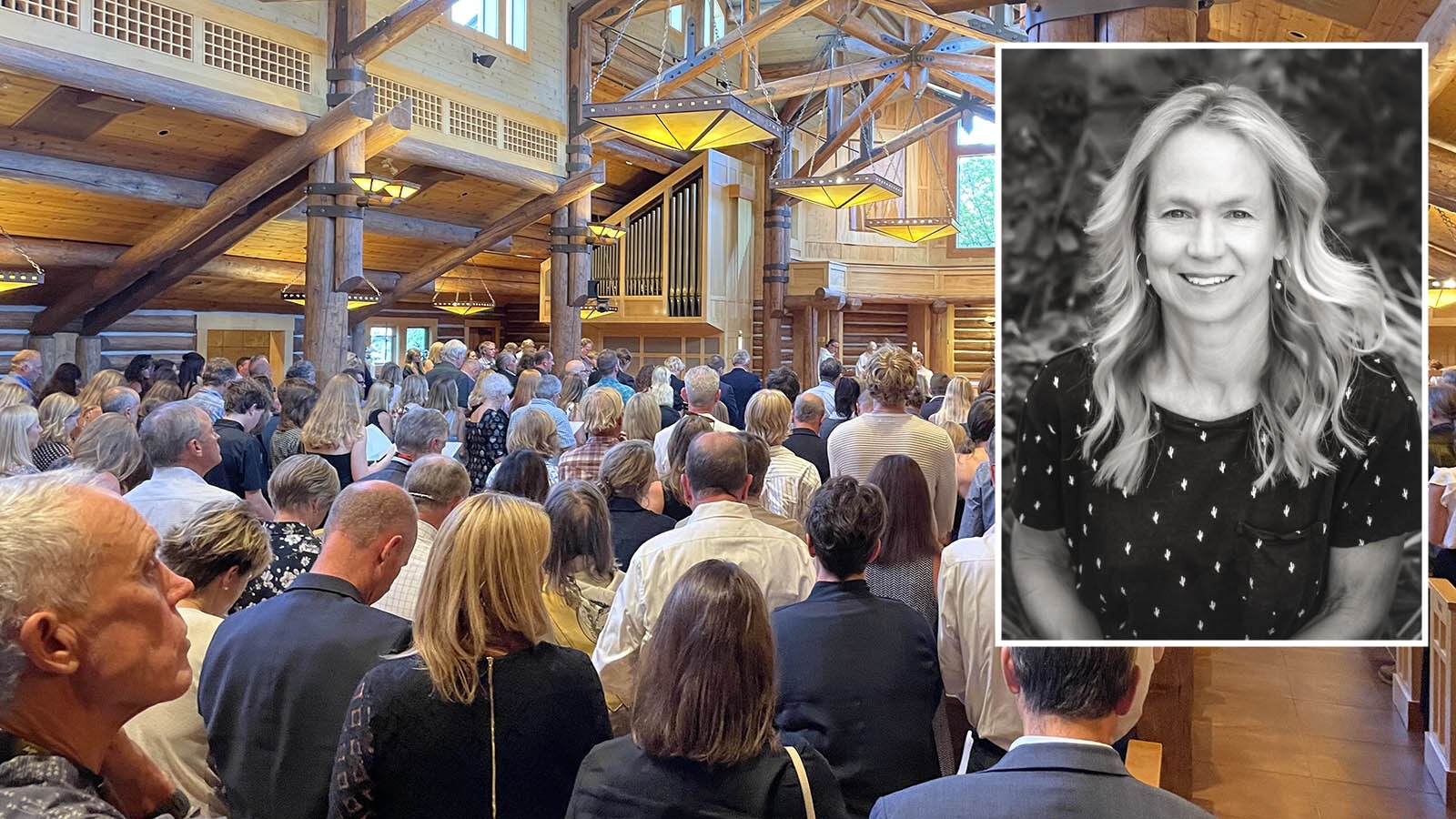Shayna Ritthaler told her friends that she was in love. The 16-year-old Upton girl had met Michael Campbell, 17, on an online dating app, and the pair chatted for several weeks before they hatched the plan for Shayna to run away with him to live at his parent’s home in Sturgis, South Dakota.
Campbell thwarted attempts a couple times before finally getting the nerve to follow through, authorities say.
Finally, a plan was hatched. It was Thursday, October 3, 2019. Campbell drove to Moorcroft and picked Shayna up on her lunch hour at a local coffee shop and gas station within walking distance of Moorcroft High School.
Video surveillance from the Coffee Cup clearly showed Shayna getting into a Jeep-like vehicle with an unknown driver and unreadable license plates.
School staff immediately jumped into gear, notifying the grandparents, Shelly and Reuben Ritthaler, who had raised the girl since a young age on their ranch in rural Weston County. The school told them that Shayna had not returned from her lunch break, according to Reuben.
The Moorcroft Police Department was called in and an attempt to locate (ATL) was issued for both Shayna and the Jeep. The agency worked with South Dakota law enforcement to track her to Campbell’s home in Sturgis.
By the time authorities were legally able to enter the home on Oct. 7, it was too late. Shayna was found dead in a closet covered with clothing. Campbell later told investigators that the two had gotten into an argument during which he’d returned with his mother’s handgun and shot her once in the head.
Campbell, then a juvenile, pleaded guilty to first-degree manslaughter and was sentenced to 55 years in prison.
Need Protocols, Grandparents Say
It was a case that garnered national and international news and one that broke the hearts of the Ritthaler family. That children do not come with a manual is further complicated when they commit what amounted to a fatal mistake, Reuben told Cowboy State Daily.
Though Reuben Ritthaler knows that nothing can be done to bring his granddaughter back, he also doesn’t want it to happen to anyone else’s child.
Reuben made it clear that he’s not blaming anyone for Shayna’s death except the teen who shot her. He also understands that Shayna willingly put herself into a situation that ultimately cost her life.
That said, he also feels that more could have been done initially by the Moorcroft Police Department from the moment Shayna was reported missing.
There was a lot of hand wringing, Reuben felt, on behalf of former Moorcroft Police Chief Douglas Lundborg, who he felt seemed more concerned about the cost of overtime required to work the case. Lundborg retired in 2021 after more than three decades on the job.
Reuben’s main questions are why it took police so long to get a warrant for Shayna’s phone and even longer to ultimately gain access to Campbell’s house, which took four days.
Reuben questioned how police could act faster and with more assertiveness, working a stolen car case. Last month, he noted, a stolen car from Upton was found within three hours of being reported missing, ironically in Sturgis, the same place his granddaughter was found dead.
“Why is that they can find a car so quickly, but not a person?” Reuben rhetorically asked.
Law enforcement need missing person protocols, Reuben asserted, so everyone is on the same page and families have clear indicators of what they can do and how the process works.
Sound Legislation
For this reason, Reuben is an outspoken proponent of Senate File 114, which just sailed through the Wyoming Senate last week. The Cowboy State is one of six that currently do not have missing person reporting requirements and instead allow each agency to dictate their own policies.
If passed, the bill would mandate law enforcement follow specific protocols when handling missing person cases, including reporting persons missing within eight hours of credible reports as well as requiring mandatory reporting to national and statewide law enforcement and missing person databases among other measures
The bill will head to the House next week for discussion.
Though Reuben is pleased with the bill he also doesn’t think it goes far enough and instead would like to see more procedural dictates like when an agency should be required to ping a phone and get a warrant as well as ensure stronger protections for the victim, not the predators, he said.
He feels let down by the Moorcroft Police who he feels did not act swiftly enough or take his granddaughter’s imminent danger to heart, telling him that she’d likely come home on her own, he said.
Chief among Reuben’s complaints was that it took police two days to get a warrant that didn’t happen until Oct. 5 to search Shayna’s phone, which was paramount to finding her given that she’d been communicating with Campbell online.
Bill Bryant, current police chief and lead investigator on Shayna’s case, disagreed with the characterization that his department was slow to respond and feels that they responded swiftly and with an adequate response, including taking a report immediately on the day she disappeared and entering her into NCIC (the National Crime Information Center) that same afternoon.
Bryant, who has been police chief for four years, said Shayna’s case still haunts him because of the tragic way it turned out and that they weren’t able to save her. In fact, it was he and Upton Police Chief Susan Bridge who had to deliver the news of Shayna’s death to her grandparents on Oct. 8 after Shayna had been identified.
He feels terrible that she died, Bryant told Cowboy State Daily, but he doesn’t think that law enforcement could have done anything differently to save the teen from death.
The police report shared by the Moorcroft Police Department suggests that Shayna likely died the morning of Oct. 4 based on social media correspondence that Bryant was later able to access on Oct. 17 after applying and receiving a warrant to search Shayna’s social media accounts.
The friend later told police that some of the messages she got late that night alarmed her and didn’t appear to be from Shayna.
Need More Training
Dave Wolfskill, a retired Crook County Sheriff Deputy and volunteer private investigator who specializes in missing person cases, believes that had the Moorcroft Police Department should have acted immediately on the last number to call Shayna's phone and pinged it immediately.
He said that he and Reuben did the heavy lifting.
"They did nothing," Wolfskill said. "Reuben had to go tell them what I’d found."
Reuben agreed, and credits Wolfskill for getting the ball rolling and feeding his information to law enforcement in both Wyoming and South Dakota.
“If it weren’t for Dave, we probably never would have found her body,” Reuben said.
Wolfskill said he stepped in to help the Ritthaler family as soon as he learned that Shayna had disappeared. First on his to-do list was procuring the last number to call Shayna the day before she disappeared on Oct. 3 from Reuben. Wolfskill then ran the number through a public database and was able to tie it to Campbell in southwestern South Dakota.
Wolfskill further galvanized a couple groups of volunteers to search the Sturgis area near Campbell’s home who were able to gather intelligence about Campbell and Shayna.
Where it took the Moorcroft Police two days to discern Campbell’s identity, Wolfskill said he had it with 24 hours of her being gone, and with some digging, discovered Campbell lived outside of Sturgis with his mother, all of which Reuben said he shared with police.
The police report indicates that Bryant applied for and received a warrant for the phone on Oct. 5, and that the Moorcroft Police were actively following up on leads generated by their Facebook post placed the day prior.
The following day, Bryant also applied for a warrant to search Campbell's phone after Reuben provided the name and number, the report states.
Correspondence between the teens revealed that they'd been planning this for a while with the goal of Shayna living in Campbell's basement bedroom because his parents do not come down to his room. He would supply her with food, and Shayna could either come to work with him or hide out in his room and use his phone, according to the report.
On Oct. 6, the report states Bryant received a call from Deadwood Police who "had taken the lead on the case," stating they had located the vehicle at Campbell's home with Shayna’s backpack in it. When questioned by police, Campbell said that he and Shayna had gotten into a fight that Saturday, and she wandered off toward I-90.
At that point, there was not enough probable cause to search his home, Bryant said, noting they can't just enter a residence without proper warrants.
It wouldn’t be until the following day that the Meade County Sheriff contacted Campbell at his work in Deadwood, where he confessed to killing Shayna and led law enforcement to his home where they discovered the body.
By then, Bryant was also able to procure a warrant to charge Campbell for interference of custody, the same day Campbell confessed to killing Shayna.
Shayna’s body was ultimately discovered in Campbell’s basement bedroom stuffed into a closet that was barricaded behind a bed and dresser.
Change In Protocols
Bryant said when it comes to missing teens, judgement is important and knowing that particular teen.
“If we've dealt with the kid enough, we kind of know,” he said. “If they're not known to us, then it's totally different world.”
He also said that his department has protocol for investigating missing teens, which they see the most of in their small, close-knit town of just over 1,000. The protocol is in line with the proposed legislation, including taking a report within eight hours of a person’s disappearance and immediately reporting to national law enforcement databases as was the case of Shayna.
In his experience, the Moorcroft Police Department locates missing teens very quickly.
He also noted that law enforcement requires probable cause to secure a warrant and that they have to meet the legal standard to do so. When they pinged Shayna’s phone, they learned it had been thrown out of the window somewhere between Moorcroft and Sundance.
That said, he and his department learned a lot from Shayna’s case, including the importance of cell phone and social media activity.
As a result, they’ve since implemented revised protocols that require officers to fill out the corresponding form immediately – including description and what they were wearing – so dispatch can send to neighboring agencies and on their department Facebook page.
New protocols also require responding officers to get information about cell phone numbers and social media accounts to allow for procuring speedier warrants.
For Reuben and his family, all that is well and good, and he plans to advocate for enhanced protocols to prevent other families from undergoing similar tragedies.
“You got to forgive, but you don’t have to forget,” he said. “This is something that the state of Wyoming needs to do. It’s almost like they shrug off runaways as if they’ll automatically be back or show up some place.”
That’s the predominant attitude, he said.
“We need to do better,” he added, “because our kids deserve it.”
He also questioned the need for parents to automatically give their kids cell phones like he had as well as their automatic right to privacy as minors.
“There’s a lot of information on a stupid phone, especially when that someone is a teen and potentially endangered,” he said.
“You can’t build a law that fixes everything, but you’ve got to have some protocols as a starting point.”
Jen Kocher can be reached at jen@cowboystatedaily.com.





